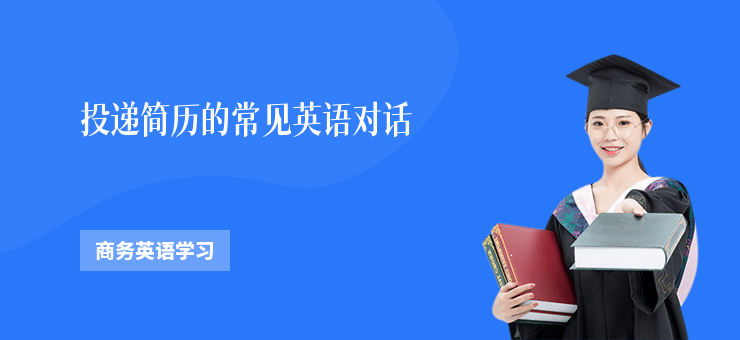
投遞簡歷的常見英語對話
摘要
求職路上,英語溝通往往是“隱形門檻”——給外企發簡歷郵件寫得像翻譯軟件產物?HR突然來電詢問簡歷細節時大腦空白?面試被要求“聊聊你的簡歷”卻不知從何說起?別慌!這篇文章整理了簡歷投遞全流程(郵件溝通/電話溝通/面試問答)的3大高頻場景,搭配15組真實對話模板+避坑指南,幫你用英語“精準輸出”,讓HR記住你的專業度。
一、郵件溝通:簡歷投遞的“第一印象”
投簡歷時,郵件本身就是“迷你簡歷”。不少人以為“附件發了簡歷就行”,結果正文空著或寫得敷衍,直接被HR劃入“不認真”行列。其實,一封規范的英文郵件能幫你在初篩階段就脫穎而出。
場景1:首次投遞簡歷——讓HR一眼記住你的郵件
你是不是也遇到過:打開郵箱寫投遞郵件,盯著“主題”欄發呆——寫“Job Application”太籠統,寫太長又怕被折疊;正文想介紹自己,又怕寫太多HR不看?
對話模板(郵件示例):
Subject:Application for [崗位名稱] [你的名字] [關鍵優勢,如“5年市場經驗”/“XX大學應屆生”]
(例:Application for Digital Marketing Specialist Zhang Wei 3 Years E-commerce Experience)
Dear Hiring Manager,
I hope this email finds you well. I am writing to express my interest in the [崗位名稱] position at [公司名稱], which I found on [招聘渠道,如LinkedIn/公司官網].
With [X年經驗/相關技能,如“a background in social media strategy and data analysis”], I was excited to see this opportunity align with my expertise in [具體能力,如“developing viral marketing campaigns and optimizing conversion rates”]. In my current role at [當前公司], I [一句話成就,如“led a team to increase Instagram followers by 40% in 6 months”], which I believe could bring value to [公司名稱]’s [相關業務,如“new product launch plan”].
Attached please find my resume for your review. I would welcome the chance to discuss how my skills match your team’s needs. Thank you for considering my application.
Sincerely,
[你的名字]
[電話] | [郵箱] | [LinkedIn鏈接(可選)]
避坑指南:
主題必須包含“崗位名稱+姓名”,不然HR下載附件后可能找不到對應人(別問怎么知道的,之前幫HR整理簡歷時,見過太多“簡歷.pdf”“求職.docx”,直接被歸到“待確認”文件夾);
正文別超過3段,重點說“你為什么適合這個崗”,而不是“這個崗為什么適合你”;
附件命名規范:[姓名]_[崗位名稱]_Resume.pdf(例:LiJing_Accountant_Resume.pdf),避免用“最新簡歷.pdf”這種模糊名稱。
場景2:跟進簡歷狀態——“催進度”也能很禮貌
投完簡歷一周沒動靜,想問問進度又怕顯得“心急”?其實HR每天收上百封郵件,主動跟進反而能讓TA注意到你——前提是“禮貌不打擾”。
對話模板(郵件示例):
Subject:Following Up on [崗位名稱] Application [你的名字]
Dear [HR姓名,若知道,如Ms. Smith/Dear Hiring Team],
I hope you’re having a productive week. I’m writing to gently follow up on my application for the [崗位名稱] position, which I submitted on [投遞日期,如June 15th].
I remain very enthusiastic about the opportunity to join [公司名稱] and contribute to [具體業務,如“your sustainability project”]—I’ve been following [公司動態,如“your recent partnership with X”] and was impressed by [具體細節,如“how you integrated customer feedback into product design”].
Please let me know if there’s any additional information I can provide to support my application. Thank you for your time and consideration—I look forward to hearing from you.
Best regards,
[你的名字]
避坑指南:
投遞后7-10天跟進最合適,太早顯得急躁,太晚可能崗位已招滿;
郵件里提一句“關注公司動態”(比如官網新聞、社交媒體更新),能體現你對公司的興趣,不是“海投選手”;
別問“我的簡歷過篩了嗎”“什么時候面試”,用“是否需要補充材料”更委婉。
二、電話溝通:別讓“突然來電”打亂節奏
比起郵件,電話溝通更考驗“即時反應”。要么是你主動打給HR詢問進度,要么是HR突然來電確認信息——前者怕“說錯話”,后者怕“聽不懂”,其實掌握幾個關鍵句式就能應對。
場景1:主動致電詢問——“我是誰?我要問什么?”
真實尷尬現場:打通HR電話,一緊張說成“Hello, I want to ask about my resume...”,對方沉默兩秒問“Which position did you apply for?”,你才發現忘了準備崗位全稱。
對話模板(通話示例):
You:Hello, may I speak to someone regarding the job application, please?
HR:Sure, which position are you inquiring about?
You:I applied for the [崗位全稱,如“Senior Software Engineer (Backend)”] position on [投遞日期]. My name is [你的名字], and I’m calling to check if there’s an update on the application status.
HR:Let me pull up your information... We’re still reviewing applications and plan to schedule interviews next week. We’ll reach out via email if you’re shortlisted.
You:Thank you for the update! Is there any additional information I can provide to support my application in the meantime?
HR:No, your resume is complete for now. We’ll be in touch soon.
You:Great, I appreciate your time. Have a nice day!
避坑指南:
打電話前把“崗位名稱+投遞日期+自己名字”寫在紙上,避免臨時失憶;
接通后先說明“我是誰+申請了什么崗”,別讓HR猜;
如果HR說“還在篩選”,別追問“大概多少人申請”“我的競爭力如何”,禮貌感謝即可。
場景2:HR突然來電——“確認信息”或“邀約面試”
你是不是也經歷過:正開會/擠地鐵,突然接到陌生來電,對方開口就是一串英文“Hello, this is HR from XX Company calling about your application...”,瞬間大腦空白,只能“Um... Yeah... Okay...”?
對話模板(確認信息示例):
HR:Hello, is this [你的名字]? This is [HR姓名] from [公司名稱]. I’m calling to confirm a few details on your resume—could you verify your graduation date and current employment status?
You:Hi [HR姓名], yes, that’s correct. I graduated from [大學名稱] in [年份,如June 2020], and I’m currently employed at [公司名稱] as a [職位名稱]. Let me know if you need more details!
對話模板(邀約面試示例):
HR:We’d like to invite you for an interview next week. Are you available on [日期,如Tuesday, July 11th] at 10 AM?
You:Thank you so much for the invitation! I’m available on Tuesday at 10 AM. Could you please send the interview details (location/Zoom link) to my email?
HR:Sure, I’ll send it right after this call. Do you have any questions before we confirm?
You:Just one—who will I be meeting with during the interview?
HR:You’ll meet with the hiring manager and a team member from the [部門名稱] team.
You:Got it, thank you! I’ll prepare accordingly.
避坑指南:
接到陌生電話先別急著掛(尤其標注“招聘”的),可以說“Could you please hold on a second? I need to find a quiet place to talk”(找個安靜地方再聊);
如果沒聽清日期/時間,直接說“Could you repeat that, please? I want to make sure I note it correctly”,比假裝聽懂結果記錯時間好;
面試邀約一定要確認“形式(線上/線下)+時間+面試官身份”,方便提前準備。
三、面試問答:簡歷細節的“深度溝通”
面試時,HR常會圍繞簡歷提問:“Walk me through your resume”(講講你的簡歷)“Why did you leave your last job?”(為什么離職)“Tell me about this project on your resume”(講講這個項目)。這些問題不是“復述簡歷”,而是看你能否把經歷和崗位需求掛鉤。
問題1:Walk me through your resume(按時間線介紹經歷)
錯誤示范:從大學專業講到實習,再到現在的工作,流水賬報菜名,HR聽得直看表。
正確思路:挑2-3段和崗位最相關的經歷,按“時間+職位+核心職責+1個成就”的邏輯說,突出“你能為公司做什么”。
回答示例:
“Sure! I graduated from [大學名稱] with a degree in [專業] in 2019. My first role was as a [實習/第一份工作職位] at [公司名稱], where I focused on [核心職責,如“assisting with market research and competitor analysis”]. There, I supported a project that [成就,如“helped the team identify a new target audience, leading to a 15% increase in campaign engagement”].
After that, I joined [當前公司] as a [當前職位] two years ago. My main responsibilities include [職責,如“managing social media accounts and creating content strategies”]. Last quarter, I led a campaign for [產品/項目] that [成就,如“grew our TikTok followers by 50% and drove 20% more website traffic”].
I’m now looking to apply my experience in [相關技能,如“content marketing and data-driven strategy”] to a role like [應聘崗位], where I can contribute to [公司目標,如“expanding brand reach in the Asia market”].”
問題2:Tell me about a challenge you faced in this project(項目中的挑戰)
HR潛臺詞:想看你的解決問題能力和抗壓能力,別只說“我遇到了困難,然后解決了”,要講細節。
回答示例(用STAR法則:Situation-Task-Action-Result):
“Situation: In my last project, we needed to launch a new app feature within 3 months, but the development team was behind schedule due to unexpected technical issues.
Task: As the project coordinator, I was responsible for ensuring we still met the launch deadline without compromising quality.
Action: I first organized a meeting with the dev team to identify the root cause—turns out, they were stuck on integrating a third-party API. I researched alternative APIs and presented 2 options to the team, then worked with the product manager to adjust the feature scope slightly to prioritize core functions.
Result: We launched the feature 1 week late (instead of 3 weeks) and received 90% positive user feedback. The client was happy with the outcome, and we even got a referral for another project.”
問題3:Why do you want to work for our company?(為什么選我們公司)
踩坑回答:“Because your company is very famous”(太籠統)“I heard the salary is good”(太直白)。
加分回答:結合公司業務/文化+你的經歷/價值觀,讓HR覺得“你是認真了解過我們的”。
回答示例:
“I’ve followed [公司名稱] for a while—your focus on [公司特色,如“sustainable tech solutions”] really resonates with me. In my current role, I worked on a project that [你的經歷,如“reduced packaging waste by 30%”], and I’m excited about the chance to apply that experience to [公司項目,如“your upcoming eco-friendly product line”].
Also, I noticed from your LinkedIn posts that your team values [公司文化,如“collaboration and innovation”]—I thrive in environments where everyone contributes ideas, and I think that aligns well with how I work. Overall, I want to join a company where I can grow professionally while making an impact, and [公司名稱] feels like the perfect fit.”
寫在最后
投遞簡歷的英語溝通,核心不是“說得有多流利”,而是“表達得是否清晰、專業、有誠意”。記住:郵件突出“匹配度”,電話保持“禮貌有條理”,面試聚焦“你能帶來什么價值”。把這些對話模板存起來,遇到對應場景時稍作調整就能用——求職路上,準備充分的人總能走得更穩。
尊重原創文章,轉載請注明出處與鏈接:http://www.abtbt.com.cn/yyxx/bec/38102.html,違者必究!

